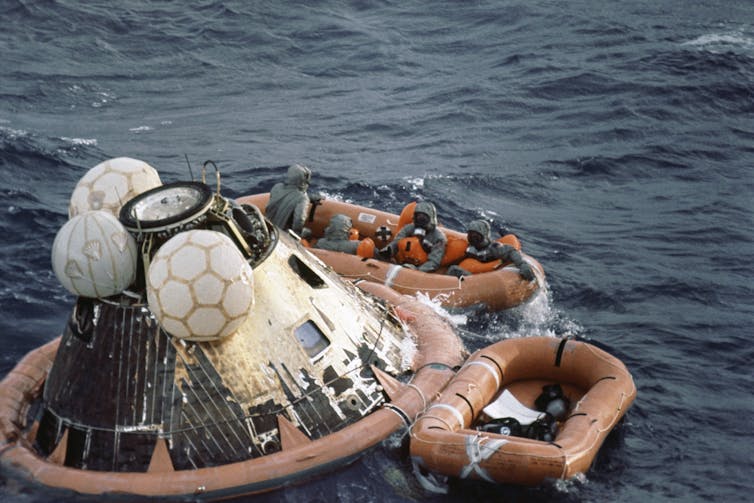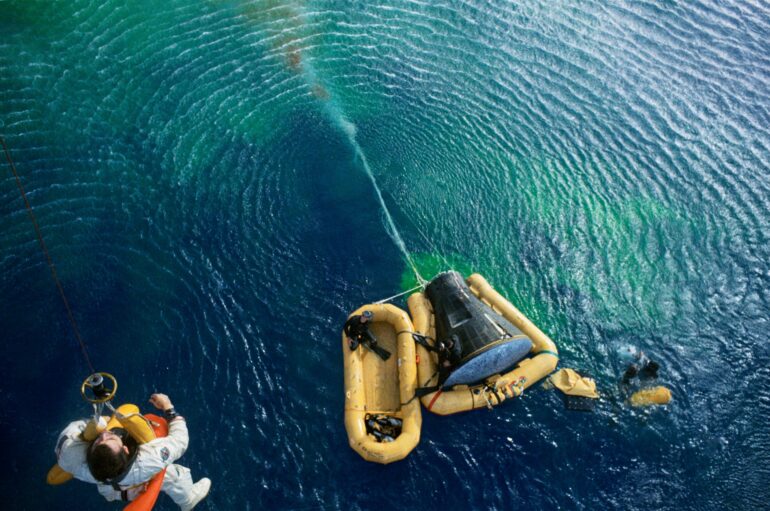For about 15 minutes on July 21, 1961, American astronaut Gus Grissom felt at the top of the world – and indeed he was.
Grissom crewed the Liberty Bell 7 mission, a ballistic test flight that launched him through the atmosphere from a rocket. During the test, he sat inside a small capsule and reached a peak of over 100 miles up before splashing down in the Atlantic Ocean.
A Navy ship, the USS Randolph, watched the successful end of the mission from a safe distance. Everything had gone according to plan, the controllers at Cape Canaveral were exultant, and Grissom knew he had just entered a VIP club as the second American astronaut in history.
Grissom remained inside his capsule and swayed on the gentle ocean waves. While he waited for a helicopter to take him onto the USS Randolph’s dry deck, he finished recording some flight data. But then, things took an unexpected turn.
An incorrect command in the capsule’s explosives system caused the hatch to pop out, which let water flow into the tiny space. Grissom had also forgotten to close a valve in his spacesuit, so water began to seep into his suit as he fought to stay afloat.
After a dramatic escape from the capsule, he struggled to keep his head above the surface while giving signals to the helicopter pilot that something had gone wrong. The helicopter managed to save him at the last instant.
Grissom’s near-death escape remains one of the most dramatic splashdowns in history. But splashing down into water remains one of the most common ways astronauts return to Earth. I am a professor of aerospace engineering who studies the mechanisms involved in these phenomena. Fortunately, most splashdowns are not quite that nerve-racking, at least on paper.

Navy personnel retrieve the crew from the Apollo 11 return capsule after splashdown on July 24, 1969.
AP Photo/Barry Sweet
Splashdown explained
Before it can perform a safe landing, a spacecraft returning to Earth needs to slow down. While it is careening back to Earth, a spacecraft has a lot of kinetic energy. Friction with the atmosphere introduces drag, which slows down the spacecraft. The friction converts the spacecraft’s kinetic energy to thermal energy, or heat.
All this heat radiates out into the surrounding air, which gets really, really hot. Since reentry velocities can be several times the speed of sound, the force of the air pushing back against the vehicle turns the vehicle’s surroundings into a scorching flow that’s about 2,700 degrees Fahrenheit (1,500 degrees Celsius). In the case of SpaceX’s massive Starship rocket, this temperature even reaches 3,000 degrees Fahrenheit (nearly 1,700 degrees Celsius).
Unfortunately, no matter how quickly this transfer happens, there’s still not enough time during reentry for the vehicle to slow down to a safe enough velocity not to crash. So, the engineers resort to other methods that can slow down a spacecraft during splashdown….



